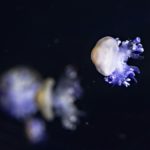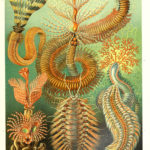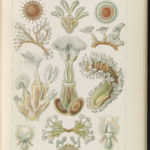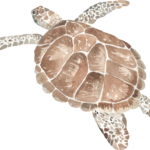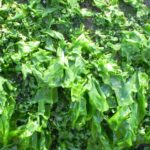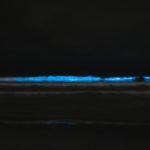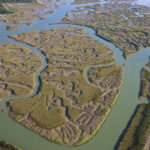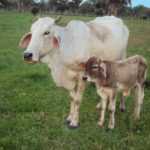El curioso caso de la medusa Benjamin Button
- Bavestrello, G., Sommer, C., Michele, S. (1992). Bi-directional conversion in Turritopsis nutricula (Hydrozoa). Sci Mar, 56(2-3), 137-40. Enlace aquí.
- De Vito; et al. (2006). Evidence of reverse development in Leptomedusae (Cnidaria, Hydrozoa): the case of Laodicea undulata (Forbes and Goodsir, 1851). Marine Biology. 149 (2): 339–346. doi:10.1007/s00227-005-0182-3.
- He, J.; Zheng, L.; Zhang, W.; Lin, Y.; Steele, R.E. (21 December 2015). Life Cycle Reversal in Aurelia sp. (Cnidaria, Scyphozoa). PLOS ONE. 10 (12): e0145314. doi:10.1371/journal.pone.0145314.
- Matsumoto, Y. (2017). Transdifferentiation in Turritopsis dohrnii (Immortal Jellyfish): Model System for Regeneration, Cellular Plasticity and Aging. Master’s thesis, Texas A & M University. Available electronically from https://hdl.handle.net/1969.1/173118.
- Matsumoto, Y., Piraino, S., Miglietta, M. P. (2019). Transcriptome characterization of reverse development in Turritopsis dohrnii (Hydrozoa, Cnidaria). G3: Genes, Genomes, Genetics, 9(12), 4127-4138. doi: 10.1534/g3.119.400487
- Miglietta, M.P.; Piraino, S.; Kubota, S.; Schuchert, P. (2007). Species in the genus Turritopsis (Cnidaria, Hydrozoa): a molecular evaluation. Journal of Zoological Systematics and Evolutionary Research. 45 (1): 11–19. doi:10.1111/j.1439-0469.2006.00379.x.
- Muñoz Páez, A. (2012). Historia del veneno, de la cicuta al polonio. Editorial Debate, Madrid, Spain. Enlace aquí.
- Piraino, S.; Boero, F. (1996). Reversing the life cycle: Medusae transforming into polyps and cell transdifferentiation in Turritopsis nutricula (Cnidaria, Hydrozoa). The Biological Bulletin; Woods Hole. 190 (3): 302–312. doi:10.2307/1543022.
- Rich, N. (November 28, 2012). “Can a jellyfish unlock the secret of immortality?”. The New York Times Magazine. Retrieved October 22, 2017. Enlace aquí.
Sabella spallanzanii, el ingeniero del ecosistema
- Bulleri, F. & Chapman, M.G. (2010). The introduction of coastal infrastructure as a driver of change in marine environments. Journal of Applied Ecology, 47:26-35.
- Capdevila Argüelles, L., Iglesias García, A., Orueta, J.F. & Zilletti, B. (2006). Especies exóticas invasoras: diagnóstico y bases para la prevención y el manejo. Serie técnica: Organismo Autónomo de Parques Nacionales, Ministerio de Medio Ambiente.
- Connell, S.D. (2000). Floating pontoons create novel habitats for subtidal epibiota. Journal of Experimental Marine Biology and Ecology, 247: 183-194.
- Douglas, E.J., Townsend, M., Tait, L.W., Greenfield, B.L., Graeme, I.J. & Lohrer, A.M. (2020). Sabella spallanzanii and Seafloor Biodiversity Enhancement in a Marine Soft-Sediment System. Diversity, 12(228). DOI: doi.org/10.3390/d12060228
- Glasby, T.M, Connell, S.D., Holloway, M.G. & Hewitt, C.L. (2007). Nonindigenous biota on artificial structures: could habitat creation facilitate biological invasions? Marine Biology, 151:887-895.
- O’Brien, A.L., Ross, J.D. & Keough, M.J. (2006). Effects of Sabella spallanzanii physical structure on soft sediment macrofaunal assemblages. Marine and Freshwater Research, 57: 363-371.
- Sellheim, K., Stachowicz, J.J. & Coates, R.C. (2010). Effects of a nonnative habitat-forming species on mobile and sessile epifaunal communities. Marine Ecology Process Series, 398: 69-80.
- Simberloff D. & von Holle B. (1999). Positive interactions of nonindigenous species: invasional meltdown. Biological Invasions, 1: 21–32.
Bugula neritina, una especie invasora ideal para albergar otras especies invasoras
- Bishop Museum 2002. Bugula neritina (Linnaeus, 1758). Guidebook of introduced marine species of Hawaii. SMSFP 2001. Bugula neritina (Linnaeus, 1758). Smithsonian Marine Station at Fort Pierce. http://sea-entomologia.org/IDE@/revista_82.pdf
- Kenworthy, J., Rolland, G., Samadi, S., Lejeusne, C. (2018). Local variations within marinas: Effects of pollutants and implications for invasive species. Marine pollution Bulletin, 96-106.
- Ros M., Guerra-García, J. M., González-Macías, M., Saavedra Á. & López-Fe, C.M. (2013). Influence of fouling communities on the establishment success of alien caprellids (Crustacea: Amphipoda) in Southern Spain. Marine biology research, 9: 293-305.
- Lord, J.P. (2016). Impact of seawater temperature on growth and recruitment of invasive fouling species at the global scale. Marine ecology, DOI: 10.1111/maec.12404.
- Método de Evaluación Rápida de Invasividad (MERI) para especies exótica en México, Bugula neritina (Linnaeus, 1758).
- Molina, S., Ros, M., Guerra-García, José M. (2017). Distribution of the invasive caprellid Caprella scaura (Crustacea: Amphipoda) in Cádiz Marina, Southern Spain: Implications for its dispersal. Springer, DOI:10.1007/s41208-017-0024-3.
- Ros, M., Vázquez-Luis, M. & Guerra-García, J.M. The tropical caprellid amphipod Paracaprella pusilla: a new alien crustacean in the Mediterranean Sea. Helgol Mar Res 67, 675–685 (2013). https://doi.org/10.1007/s10152-013-0353-4.
- Saenz Arias, P., Navarro Barranco, C., Guerra-García, J.M. (2020). Seguimiento temporal de la comunidad de anfípodos (Crustacea Peracarida) asociada al briozoo Bugula neritina en el puerto deportivo de La Alcaidesa (La Línea de la Concepción, Cádiz). Almoraima, Revista de Estudios Campobigraltareños, 53.
Bioprospección marina: algas para la agricultura moderna
- Aroyehun, A.Q.B., Razak, S.A., Palaniveloo, K., et al. (2020) Bioprospecting Cultivated Tropical Green Algae, Caulerpa racemosa: A Perspective on Nutritional Properties, Antioxidative Capacity and Anti-diabetic Potential. Foods, 9 https://doi.org/10.3390/foods9091313
- Hashem, H.A., Mansour, H.A., El-Khawas, S.A., & Hassanein, R.A. (2019) The Potentiality of Marine Macro-algae as Bio-fertilizers to Improve the Productivity and Salt Stress Tolerance of Canola (Brassica napus L.) plants. Agronomy, 9. https://doi.org/10.3390/agronomy9030146
- Hassan, S.M., Ashour, M., Sakai, N., et al. (2021) Impact of Seaweed Liquid Extract Biostimulant on Growth, Yield, and Chemical Composition of Cucumber (Cucumis sativus). Agriculture, 11, 320. https://doi.org/10.3390/agriculture11040320
- Kocira, S., Szparaga, A., Kuboń, M., et al. (2019) Morphological and Biochemical Responses of Glycine max (L.) Merr. To the Use of Seaweed Extract. Agronomy, 9 https://doi.org/10.3390/agronomy9020093
- Mathimani, T., Pugazhendhi, A. (2019) Utilization of Algae for Biofuel, Bio-products and Bio-remediation. Biocatal Agric Biotechnol, 17, 326–330. https://doi.org/10.1016/j.bcab.2018.12.007
- Pereira, L. (2020) Characterization of Bioactive Components in Edible Algae. Mar Drugs, 18, 10–14. https://doi.org/10.3390/md18010065
- Renuka, N., Guldhe, A., Prasanna, R., et al. (2018) Microalgae as Multi-functional Options in Modern Agriculture: Current Trends, Prospects and Challenges. Biotechnol Adv, 36, 1255–1273. https://doi.org/10.1016/j.biotechadv.2018.04.004
La bioluminiscencia marina: especies capaces de producir luz
- Herring PJ. (1978). Bioluminescence in action. London: Academic press.
- Mallefet, J., Stevens, D.W., Duchatelet, L. (2021). Bioluminescence of the largest Luminous Vertebrate, the Kitefin Shark, Dalatias licha: First Insights and Comparative Aspects. Frontiers in Marine Science, 8, (artículo 633582).
- C. (2015). La luz del Mar. Naturalmente – Revista digital del Museo Nacional de Ciecias Naturales (6), 3. Obtenido de: http://revista.mncn.csic.es/nm06/3/
- Martini, S., Haddock, S. (2017). Quantification of bioluminescence from the surface to the deep sea demonstrates its predominance as an ecological trait. Scientific Reports, 7, (artículo 45750).
- Woodland J. 2012. In: Sperelakis N, eds. Cell physiology Sourcebook: essentials of membrane biophysics. 4ª ed. London: Elsevier, 925-949.
El efecto antrópico y la invasión de especies. La pesadilla de las marismas y su impacto en el mar.
- Bortolus, A. (2006). The austral cordgrass Spartina densiflora Brong.: its taxonomy, biogeography and natural history. Journal of Biogeography, 33(1), 158-168.
- Brian R. Silliman (Editor), Mark D. Bertness (Editor), Edwin D. Grosholz (Editor). (2009) Human Impacts on Salt Marshes: A Global Perspective. ISBN https://bit.ly/3ydlA9C
- Doody JP (2008) Saltmarsh conservation, management and restoration. Springer
- Figueroa, M. E., and E. M. Castellanos. “Vertical structure of Spartina maritima and Spartina densiflora in Mediterranean marshes.” Plant form and vegetation structure (1988): 105-108.
- Gallego‐Tévar, B., Peinado‐Torrubia, P., Álvarez, R., Gandullo, J., Grewell, B. J., Figueroa, E., & Castillo, J. M. (2020). Changes to the functional traits of phosphoenolpyruvate carboxylase following hybridization in C‐4 halophytes. Physiologia plantarum, 169(1), 83-98
- Gallego-Tévar, B., Peinado-Torrubia, P., Álvarez, R., Grewell, B. J., & Castillo, J. M. (2020). From physiology to salt marsh management challenges with sea level rise: the case of native Spartina foliosa, invasive S. densiflora and their hybrid. Conservation physiology, 8(1), coaa053.
- Gardner, Royal C., and C. Finlayson. “Global wetland outlook: state of the World’s wetlands and their services to people.” Ramsar Convention Secretariat. 2018.
- Ministerio de agricultura, alimentación y medio ambiente de España (2013) Spartina densiflora. SPADEN/EEI/FL050. Catálogo Español de Especies Exóticas Invasoras. Real Decreto 630/2013, de 2 de agosto. (BOE nº 185): 03.08.2013 https://www.miteco.gob.es/gl/biodiversidad/temas/conservacion-de-especies/spartina_densiflora_2013_tcm37-69859.pdf
- Verhoeven, J. T., Arheimer, B., Yin, C., & Hefting, M. M. (2006). Regional and global concerns over wetlands and water quality. Trends in ecology & evolution, 21(2), 96-103.
La importancia de lo invisible
- Bunse, C., Lundin, D., Karlsson, C.M.G., Akram, N., Vila-Costa, M., Palovaara, J., Svensson, L., Holmfeldt, K., González, J.M., Calvo, E., Pelejero, C., Marrasé, C., Dopson, M., Gasol, J.M. & Pinhassi, J. (2016). Response of marine bacterioplankton pH homeostasis gene expression to elevated CO2. Nature Climate Change.
- Pla- García, J. & Menor, C. (2017). La composición química de la atmósfera primitiva del planeta Tierra. Real Sociedad Española de Química.
- Berrendero, E. (2008). Caracterización morfológica, genética y fisiológica de cianobacterias dominantes en sistemas fluviales. Universidad Autónoma de Madrid facultad de ciencias departamento de Biología.
- Doadrio, A. (2009). Composición de la atmósfera y factores que la modifican. Monografías de la Real Academia Nacional de Farmacia.
- Roset, J., Aguayo, S. & Muñoz, M.J. (2001). Detección de cianobacterias y sus toxinas. Revista oficial de Toxicología, órgano oficial de la Asociación Española de Toxicología. Volumen 18, número 2, p. 65-71.
Ganadería Industrial: Una producción insostenible que genera cambio climático
- Greenpeace España. (10 junio 2019). La ganadería industrial está destruyendo el planeta.
- Gerber, P J; Steinfeld, H; Henderson, B; Mottet, A; Opio, C; Dijkman, J; Falcucci, A & Tempio, G. (2013). Tackling climate change through livestock – A global assessment of emissions and mitigation opportunities. Food and Agriculture Organization of the United Nations (FAO)
- FAO. (2017). El trabajo de la FAO sobre el cambio climático
- Registro Estatal de Emisiones y Fuentes contaminantes (PRTR)
- Greenpeace España. (19 junio 2019). España supera el techo de emisiones de amoniaco permitido por la UE, sobre todo debido a la ganadería industrial. 6) Ferreirim, L. Greenpeace España. (19 junio 2019). ¿Cuánto contamina la carne industrial?
- IPCC. (2007). Climate Change 2007: The Physical Science Basis. Contribution of Working Group I to the Fourth Assessment Report of the Intergovernmental Panel on Climate Change, eds Solomon, S; Qin, D; Manning, M; Chen, Z; Marquis, M; Averyt, KB; Tignor, M; Miller, HL. (Cambridge Univ Press, Cambridge, UK)
- Wattiaux, M A. (2019). Desafíos de la agricultura ganadera frente al cambio climático, en Experiencias ganaderas, agrícolas y forestales en la conservación de los recursos naturales, 33-47.
- Rivera Ferre, M. G. (2007) Cambio climático y ganadería. El ecologista. (54), 32-34 10)FAO (2018) Evaluación de las emisiones de gases de efecto invernadero y su potencial de mitigación (GLEAM)
- Tubiello, F N; Salvatore, M; Cóndor Golec, R D; Ferrara, A; Rossi, S; Biancalani, R; Federici, S; Jacobs, H & Flammini, A. (2014) Agriculture, Forestry and Other Land Use Emissions by Sources and Removals by Sinks. FAO.
- Agromeat. (16 junio 2014). Ganadería y consumo de energía fósil. 13)Ruiz, J; Herrera, P M; Barba, R; Busqué, J. (2017). Definición y caracterización de la ganadería extensiva en España. MAPAMA
- Westreicher, G. (30 abril 2020). Ganadería extensiva. Economipedia
- Ferreirim, L. Greenpeace España. (22 junio 2018). 10 datos preocupantes sobre los efectos del actual nivel de consumo de carne en nuestra salud.
